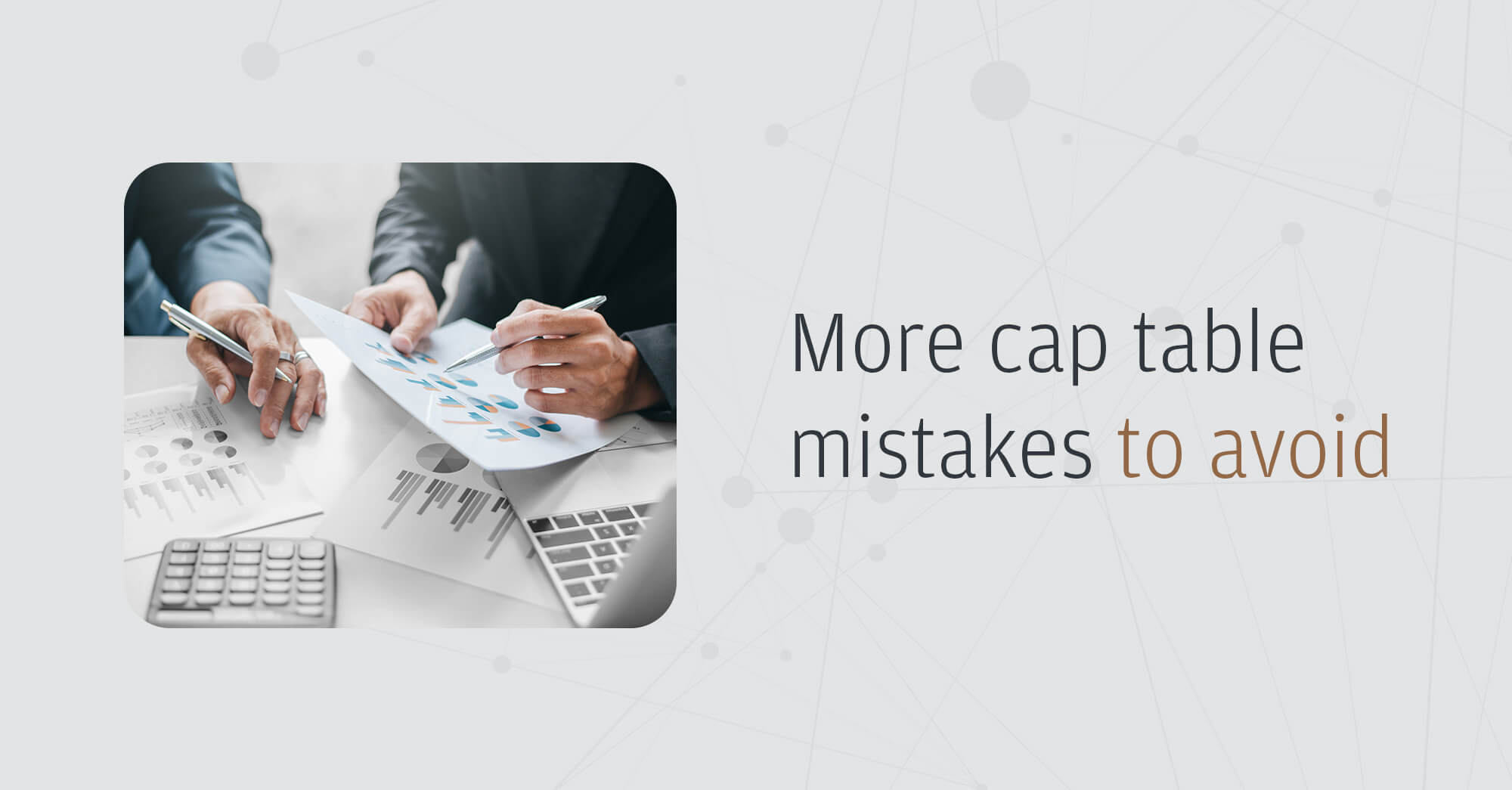Founders and CFOs of startup businesses will likely be aware that they need a cap table to outline the ownership stake in their company, but why exactly is that important and what happens if you don’t have one?
Before we get into the importance of a clean, simple cap table, let’s get started with the basics first.
What is a cap table?
A cap table, or capitalization table, is a document that records equity ownership in a company. In short it outlines who has an ownership stake in your company, and how much they each own.
For startups, cap tables are an important document as they can help both founders and investors make informed business and financial decisions regarding the company. This is why, cap tables are usually created in the early stages of a startup.
Here’s an example of a cap table:

Why do you need a Cap Table?
An accurate, constantly updated cap table is important for startups when it comes to making informed financial and hiring decisions. It can help you:
Understand who owns what:
As a cap table outlines equity ownership in your company, it gives a clear idea of who owns what and how much. Each stakeholder can easily see how much equity is allocated to each of them.
In addition, you’ll be able to see the impact on the ownership structure after raising a founding round or increasing the option pool.
Indicate who owns the decision-making power:
The percentage of ownership a stakeholder has usually indicates the amount of decision-making power. By monitoring the percentage of ownership, you can possibly determine if there’s a situation where too much power falls under a particular stakeholder group when it comes to steering the direction of your company.
Track the value over time:
A well-managed cap table allows you and other investors to understand the value of a startup over time. This can help you to stay on top of the financial status of your business.
Raise funds or attract investors:
Investors will usually look for details about company ownership and any changes since previous funding rounds. For example, they’re normally interested in 1/ how much money the company has raised, 2/ The total amount of equity that the company holds, 3/ founder’s ownership stake etc
If you have a well-maintained cap table in place, investors can use it to comprehend the overall financial health of your company, help predict future dilution and conduct analysis on if the employee option pool is sizable for recruitment. So, a simple, clean cap table can help to instill confidence in investors, by providing them with a clear understanding of your company’s potential for growth.
Recruit employees:
Employee stock options are a common form of equity compensation used to help companies attract talent. As your cap table shows the number of options available to issue, you can quickly determine how much more you can offer to a potential employee meaning no more guesswork!
Ensure audits on a startup are conducted smoothly
Cap tables need to be always kept up-to-date, to show any new owners, how many shares each owns, and to accurately display how ownership becomes diluted as the company grows. So, don’t forget to assign a project owner to run and manage this important job.
What happens if your cap table is outdated or hard to read?
At the very least, it’ll take time and human resources to reconcile your cap table if there’s a mistake in it due to inaccurate, unclear ownership details. This could also result in more significant issues ahead, for instance:
Make unwise business decisions
You could end up making wrong decisions for the business, e.g. giving out a large chunk of the company and promising employee shares that may not exist, when you’re unable to clearly and confidently see how much ownership you can afford to give out.
Lose potential investors
When potential investors are not able to get a clear idea by just looking at what you show them, it’s likely a red flag for them and you could end up losing opportunities to raise funding.
Delay an exit event
An unclear ownership situation means you and your teams may need to go back and dig up every ownership detail. Every delay could potentially put the deal at risk.
We can help manage your cap table
We can help you to achieve an accurate, updated in real-time cap table using a software solution.
Global Shares Cap Table software removes the time-consuming and error-prone manual update element. Instead, the hard work is done for you, with your current ownership structure information always available to you at the click of a button.
The relevant entries will automatically update after every funding round and you will be able to monitor all the details relating to stock, options, warrants, share classes, convertible notes, and the overall investment situation in your company.
Sign up for Global Shares Cap Table Software now
(Free for up to 100 stakeholders)
Please Note: This publication contains general information only and J.P. Morgan Workplace Solutions is not, through this article, issuing any advice, be it legal, financial, tax-related, business-related, professional or other. J.P. Morgan Workplace Solutions’ Insights is not a substitute for professional advice and should not be used as such. J.P. Morgan Workplace Solutions does not assume any liability for reliance on the information provided herein.



